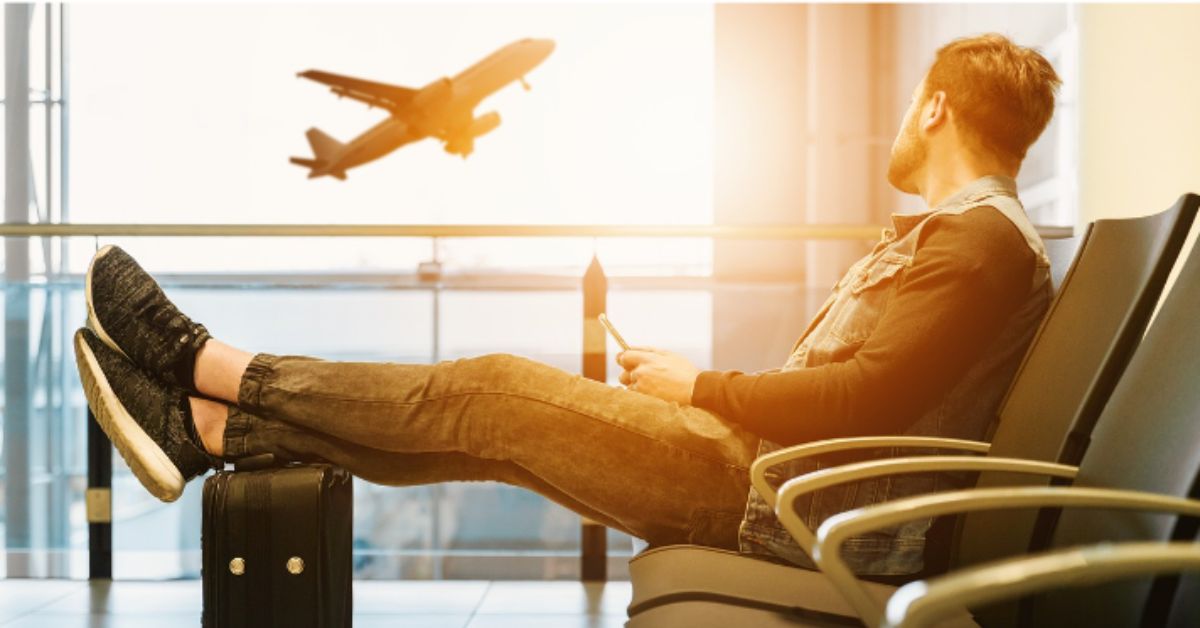Client Contact Is Not King
The pandemic limited travel globally for almost half a decade. Today, we see a dramatic increase in the number of people returning to air travel, with numbers beginning to creep towards 2019 levels. As of March 2023, revenue passenger kilometers (RPK) are up 54% in comparison to March last year. From the perspective of air travel stakeholders, this is good news, and only looks more promising as time goes by. Clients are, by definition, the lifeblood of commercial aviation revenue,and measures are being taken to ensure that they feel comfortable with their choice to travel by aircraft.
COVID 19 instilled a hefty amount of trepidation and fear in the environment that an airport represents. Contactless travel methods for clients will soon become far more commonplace, as airport technology upgrades to pave the runway for increased passenger throughput. Passport stamping is rapidly becoming a thing of the past. The EU will be implementing a new Entry/ Exit System (EES) shortly, doing away with a human interactive process that clients may perceive as a risk.
Another rapidly emerging technology is biometrics. Clients can now have their digital faceprint data captured. As a result, boarding will possibly become a seamless and contact free process.Air Canada will be the first Canadian airline to implement trials of biometric verification technology. Miami International Airport stated in 2022, that by the end of 2023, biometric technology will be present at least 130 of their gates. For those who are still adverse to submitting their “digital details” , traditional board processes will still be available. By 2030 there will be a 78% increase in biometric capable boarding gates available to clients. It may be possible that within the next decade, air travel client verification will evolve into a process with zero human contact.
While You Are Waiting
Airport technology, while initially focussed on safety and streamlining the airport experience for clients, is also delving further into immersive and data driven retail experiences. With passengers now freed from the constraints of having to appear in person for check in and boarding, a considerable amount of “free time” will be spent in relative peace at technologically advanced airports. Retailers have begun to capitalize on the “captive” presence of buyers in these scenarios, and are finding innovative ways to convert these opportunities into sales.
At Dallas Fort Worth Airport, passengers can enter a retail outlet and select a credit card they wish to have charged for their purchases. Scanning a product’s QR code automatically charges it to the clients selected method of payment when they exit the store. Monitoring is handled by an unobtrusive camera, in order to avoid a “Big Brother” feeling while shopping.
Pop up stores and vending machines, sponsored by well known brands, such as Best Buy, are becoming a more common sight in airports. Seeing the same outlets every time passengers travel often puts their buying instincts on “ignore”. Changing the type of retail opportunities alters this attitude, making airport passengers want to explore the possibilities that lie within. Vending machines also allow them to access retail brand store products which would not normally be available to them, increasing conversions as they are getting products from known sources.
Keeping Everyone Safe and Streamlined
Security is of prime concern at airports. Post 911, all locations that have large volumes of human traffic have been monitored with greater vigilance than ever. With demand returning, airports wish to make security as low key as possible, while preserving the ability to detect dangerous materials and items, such as guns, bombs and drugs. Toronto’s Pearson airport has announced that they will be looking into HEXWAVE, revolutionary new security portals, using cutting edge millimeter wave scanning, 3D imaging and AI driven analytics to make security scans quick, and hopefully, uneventful.
Situationally speaking, airport security can, at times, be slightly embarrassing. The routine of removing one’s shoes, for some, is often an uncomfortable experience. Tweed New Haven airport has solved this, with technology designed to scan passengers’ shoes without removing them, as well as providing 3D, rather than 2D , imaging of carry-on luggage. It’s fairly safe to say at this point, that the client experience and passenger accommodation, is reaching greater heights than ever to usher in a continued stream of revenue.
More To Come
Aviation in general is rotating back to normalcy. Airports, quite possibly, will look quite different the next time you decide to take a flight. Passengers are clients, and clients are the lifeblood, the revenue, of commercial aviation. From what we have looked at in this article, it seems pretty clear that the industry is happy to have them returning to the fold, and is prepared to greatly enhance the way we traditionally have experienced air travel. Looking ahead to 2024, we are bound to see more innovations that will make the beginning and end of every flight as enjoyable as possible.
